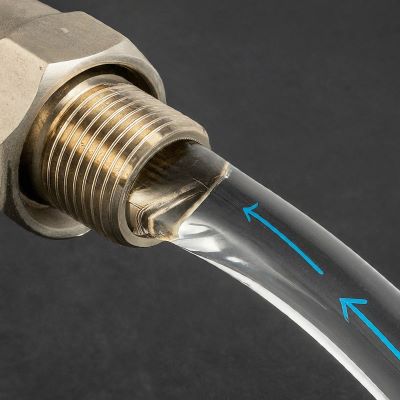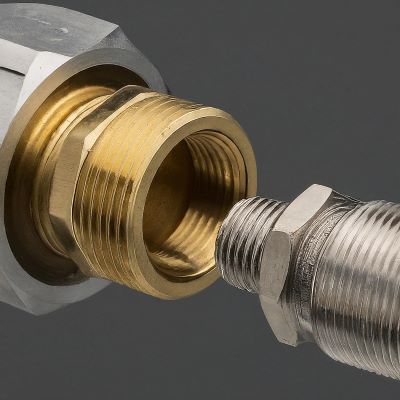In the intricate world of fluid dynamics, the efficiency and precision of transitions between different components can significantly impact the overall performance of a system. SAE to NPT adapters are crucial connectors. They help transitions between the Society of Automotive Engineers (SAE) and National Pipe Thread (NPT) standards to be seamless. These adapters play a pivotal role in diverse applications. They ensure compatibility and fluidity in hydraulic and pneumatic systems.
We are exploring SAE to NPT adapters. These connectors are important for smooth fluid transitions in complex engineering setups.
What is SAE and NPT?
In the complex world of fluid systems, it’s crucial to understand the acronyms SAE and NPT. SAE stands for Society of Automotive Engineers. NPT stands for National Pipe Thread. SAE typically refers to hydraulic fittings. NPT signifies a set of standards for tapered threads used in pipes and fittings.
The Role of Adapters in Fluid Systems
A. Seamless Transition Concept
Fluid systems thrive on seamless transitions. Any disruptions in flow can lead to inefficiencies. This can cause increased pressure drops and potential damage to components. The concept of seamless transitions in fluid dynamics directly correlates with system efficiency. Uninterrupted flow ensures optimal performance, reducing the risk of wear and tear.
B. Adapter Functions
Adapters act as mediators, bridging the gap between different connection standards. They facilitate the integration of diverse components within a fluid system. Compatibility is key. Adapters play a pivotal role. They ensure components designed under different standards can work together, promoting system unity.
Types of SAE to NPT Adapters
A. Straight Adapters
Straight adapters provide a direct, uninterrupted flow path. Their applications range from hydraulic systems in heavy machinery to industrial settings. The benefit lies in their simplicity and efficiency.
B. Elbow Adapters
Elbow adapters shine in confined spaces where a straight connection is impractical. Their angled design allows for flexibility in installation. Elbow adapters are versatile. However, they demand careful consideration of angles to avoid kinks and flow restrictions. Proper alignment is vital for optimal performance.
C. Tee Adapters
Tee adapters find their place in systems requiring fluid distribution to multiple points. Common in industrial applications, they ensure efficient flow division. Challenges may arise in maintaining balanced flow through tee adapters. Strategic placement and sizing are essential to overcome potential issues.
Material Considerations
➡️ Steel, Brass, and Aluminum Options
The choice of material significantly influences adapter performance. Steel offers strength, brass brings corrosion resistance, and aluminum provides a lightweight alternative.
➡️ Corrosion Resistance
Corrosion can compromise performance. Select materials with inherent resistance for durability. This is especially important in moist or chemically-exposed environments.
Troubleshooting Common Issues
A. Leaks and Their Causes
➡️ Identifying Leak Points
Leaks can stem from improper threading, damaged seals, or inadequate torque. Identifying the specific leak point is crucial for effective troubleshooting.
➡️Solutions for Seal Failures
To address seal failures, replace damaged seals. Make sure to properly lubricate during installation and maintain recommended torque values.
B. Compatibility Challenges
➡️ Addressing Thread Mismatch
Thread mismatch can occur between SAE and NPT components. Adapting with precision-cut threads and using appropriate sealants resolves this common challenge.
➡️ Adaptation Strategies
Strategies include using thread adapters. Ensure proper thread engagement. Consult compatibility charts to navigate potential issues.
Conclusion
In the complex world of fluid dynamics, SAE to NPT adapters are indispensable components. Their ability to seamlessly transition between standards underscores their significance. They also offer diverse types catering to specific needs. Material considerations, troubleshooting insights, and a deep understanding of their role contribute to the efficiency and longevity of fluid systems.
The judicious selection and proper utilization of SAE to NPT adapters ensure the fluid harmony. This is necessary for the optimal operation of hydraulic and fluid systems across industries.
Post time: Feb-23-2024



